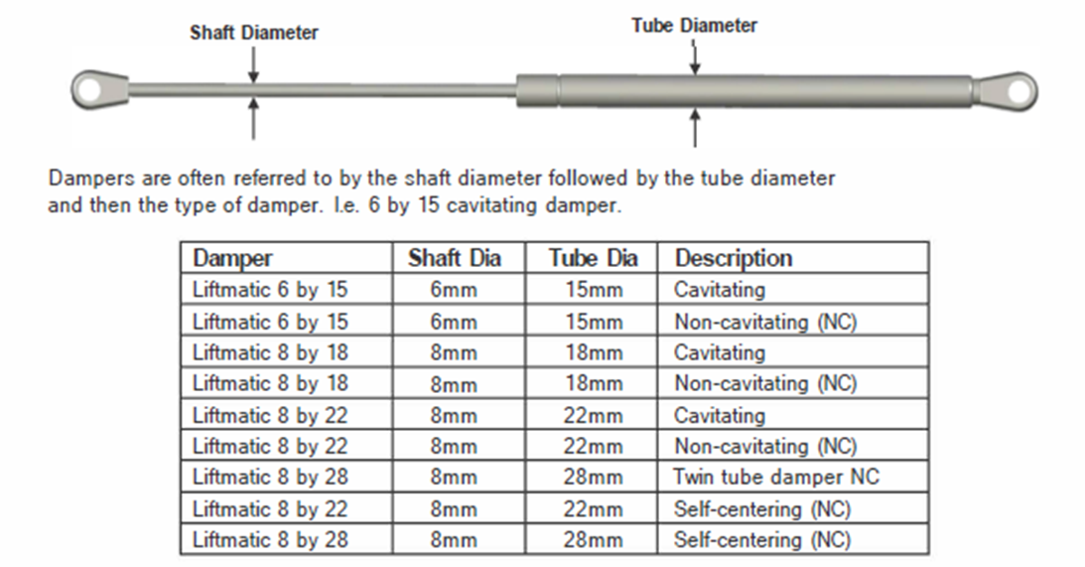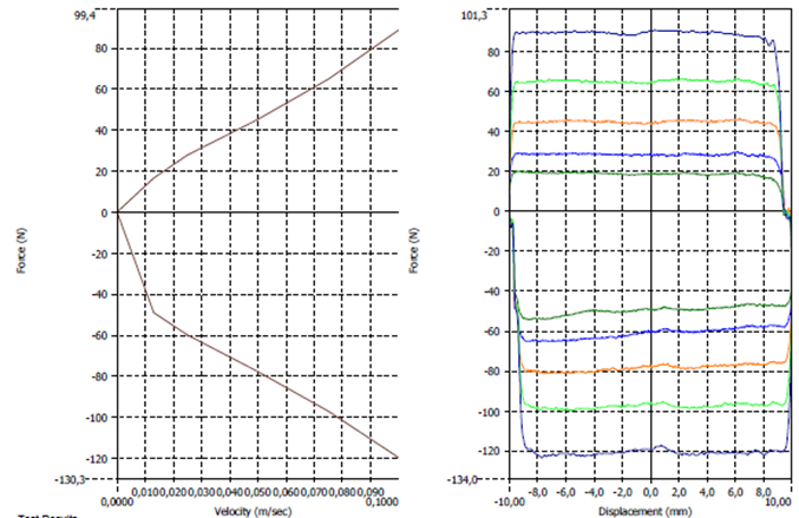non-cavitating dampers
Dampers convert the kinetic energy of the shaft being pushed or pulled into thermal energy by forcing oil through a narrow opening. It takes energy to force the oil through the small opening shearing the oil in the process creating heat.
Based on this there are 3 main features that define how much force it will take to move the shaft of the damper.
Size of the passage for the oil to pass through – the smaller the passage the more resistance to movement will be developed.
Oil viscosity – the thicker the oil the more resistance the damper will develop for a given opening; this is where temperature plays a big part in choosing the correct oil viscosity. If the damper is to function in subzero temperatures you will need lighter oil, hot temperatures heavier oil.
Velocity of the shaft, as the shaft speed is accelerated the damper will generate more force resisting the acceleration. This makes it difficult to specify the required dampening force unless it will only ever operate at a single speed. The best way to define the design requirements for a damper is to provide the force required at 2 different speeds. If this is not possible measure the time it takes for a known load to travel a set distance i.e. 15lbs travels 3 inches in 2 seconds.
Another important design requirement of dampers is how we compensate for the shaft volume as it is pushed inside the tube. With gas springs you compress the gas, but dampers use oil which is non-compressible. This requirement separate’s all dampers into 2 broad categories
- Cavitating
- Non-Cavitating
CAVITATING
The tube is filled with a mixture of oil and air, as the shaft is compressed the volume is taken up by compressing the air. This design works well in vertical or near vertical applications where the oil and air stay separated due to gravity. If these dampers are used horizontally the air and oil mix causing cavitation when the shaft is moved (thus Cavitating damper) resulting in irregular dampening forces throughout the travel. This would show up as a jerky movement of the shaft as it’s moved in and out.
NON-CAVITATING
In a Non-Cavitating damper the oil and air are prevented from mixing with the use of floating pistons, air bags and foam. This allows for a consistent force and smooth operation regardless of its mounting orientation.
Damper Nomenclature

The faster you move the shaft in and out of a damper the more force you generate. When designing a custom damper we need to know the force required at 2 different speeds so we can develop the correct force vs velocity curve. Many customers are unable to generate these values and it often requires some trial and error to get the desired forced curves.
The Graph below on the left shows the damper force output at different speeds 0-1 00mm/sec.
And the right side shows the force throughout the travel at specific speeds

